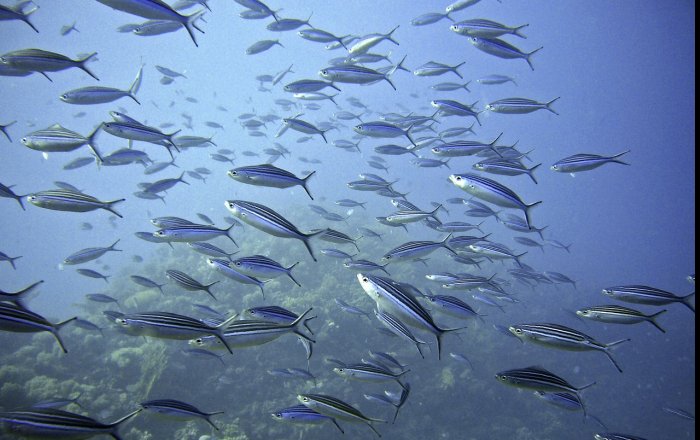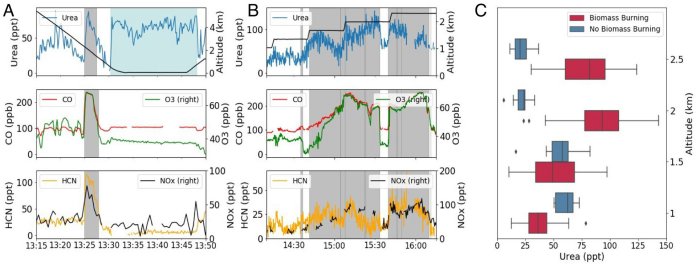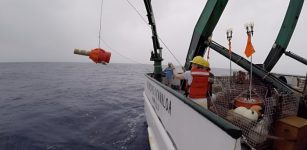Discovery Of Urea In Atmosphere Reveals Profound Consequences For Climate – Study
Eddie Gonzales Jr. – MessageToEagle.com – Areas of the ocean that are rich in marine life are having a bigger impact on our ecosystems and the climate than previously thought, new research suggests.
Image credit: joakant – Pixabay
Observations made by scientists at The University of Manchester found that the primary source of urea—a nitrogen-rich compound, vital for the growth and development of living organisms—comes from the ocean.
The observations reveal an important but unaccounted for source of reduced nitrogen and offer the first-ever observations of gaseous urea in the air.
The research, published in the journal Proceedings of the National Academy of Sciences, also reveals that urea can be transported over long distances through the atmosphere to benefit other environments that may be nutrient-deficient.
The results could have far-reaching consequences for marine productivity and climate stability.
Emily Matthews, Atmospheric Scientist at The University of Manchester, said, “Our observations provide new insights into the complex interactions between the atmosphere, ocean and ecosystems.
“Understanding the behavior and impact of urea in the atmosphere is vital for advancing our knowledge of how chemicals and substances are transferred through our environment and can help us to inform strategies to address climate change.”
Observations of urea and other selected trace gasses indicate biomass-burning inputs of urea to the marine environment. An example time series of urea concentrations is shown with the trace gasses ozone (O3), carbon monoxide (CO), hydrogen cyanide (HCN), and nitrogen oxides (NOx) for a flight in the Cape Verde region in February 2020. (A) The blue shaded region indicates enhancement of urea at the sea surface due to biogenic sources. The gray shaded regions indicate periods when the aged biomass-burning plumes were intercepted and are above the BL. (B) shows enhancements of gas-phase urea in the free troposphere, which occurred exclusively in the presence of biomass-burning plumes. (C) The boxplot shows the urea concentrations within the FT for the time series show in this figure in red and are contrasted with measurements taken during a profile later in the flight, which encountered no biomass-burning plumes, in blue. Credit: Proceedings of the National Academy of Sciences (2023). DOI: 10.1073/pnas.2218127120
The observations of gas-phase urea in the atmosphere were collected over the North Atlantic Ocean using the FAAM Airborne Laboratory, a UK airborne research facility managed by the National Centre for Atmospheric Science (NCAS) and owned by UK Research and Innovation and the Natural Environmental Research Council.
Measurements made during these flights provide detailed data on the composition and properties of aerosols and gasses in the atmosphere. Scientists from The University of Manchester and NCAS have identified unique species important to the marine reduced nitrogen cycle, including the first observations of gas-phase urea in the atmosphere.
The researchers say that the findings have significant implications for our understanding of the nitrogen cycle and calls for a revision of current models.
Emily Matthews added, “The ocean plays an important role in maintaining a stable climate through biological activity occurring near the surface of the water and contributes to oceanic uptake of carbon dioxide.”
“We now know that it is also a significant source of urea in the atmosphere throughout most of the year, which means we need to modify the processes and factors involved in the nitrogen cycle to account for the newfound importance of urea.”
The nitrogen cycle is the process during which nitrogen moves through both living organisms and physical environments including the atmosphere, soil, water, plants, animals and bacteria. It is central to the composition of the Earth System and changes of the natural environment through interactions such as aerosol formation, ozone production and as a supply of essential nutrients to living organisms.
The explanation for the observations of gas phase urea remains a mystery and further research is needed to fully understand biogeochemical coupling of nitrogen between the ocean and atmosphere.
The research findings represent an important pathway for long range transport of nitrogen to fertilize nitrogen poor regions of the surface ocean. Revising this knowledge better helps to understand how the ocean biosphere will respond to future changes.
Written by Eddie Gonzales Jr. – MessageToEagle.com Staff












